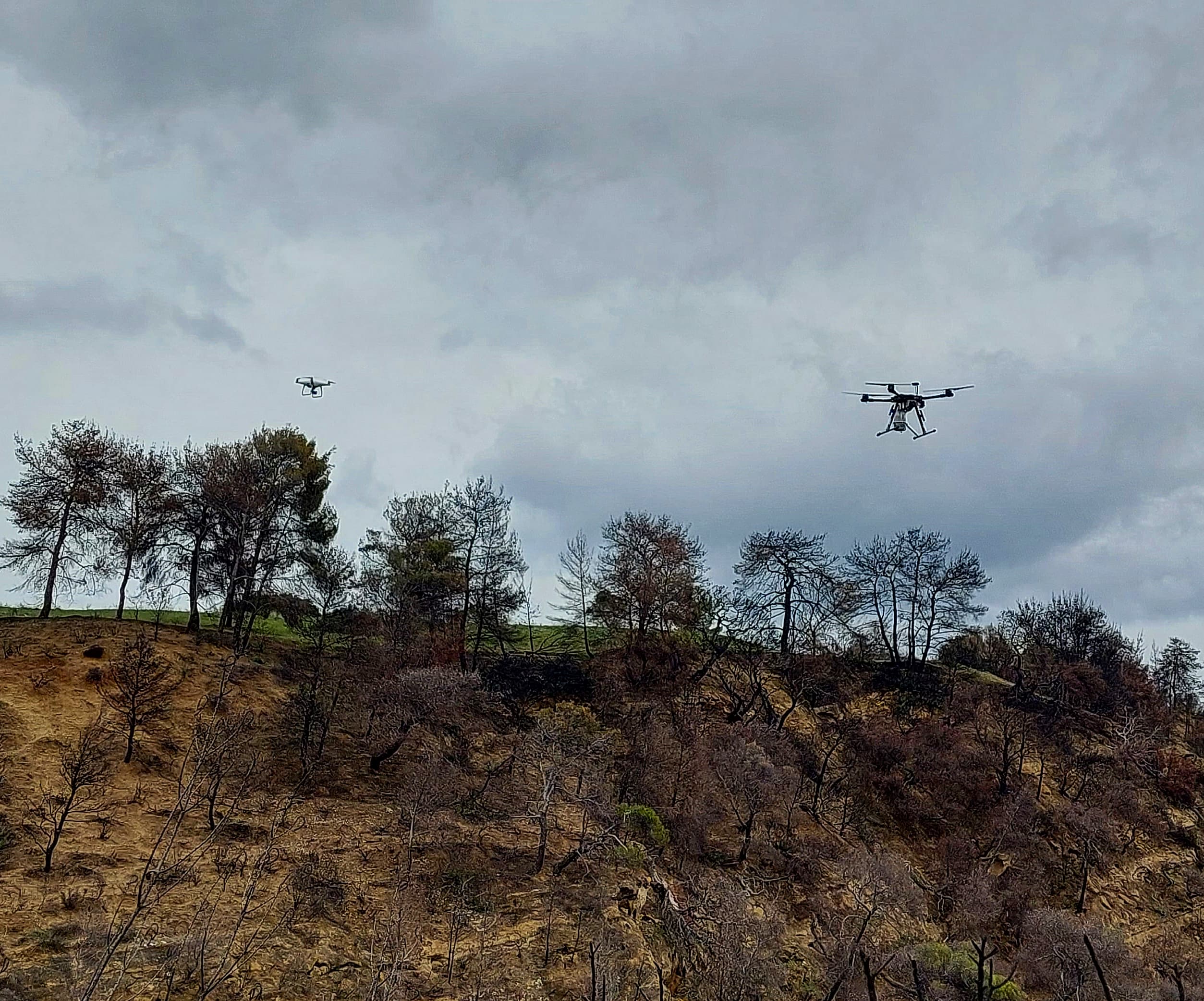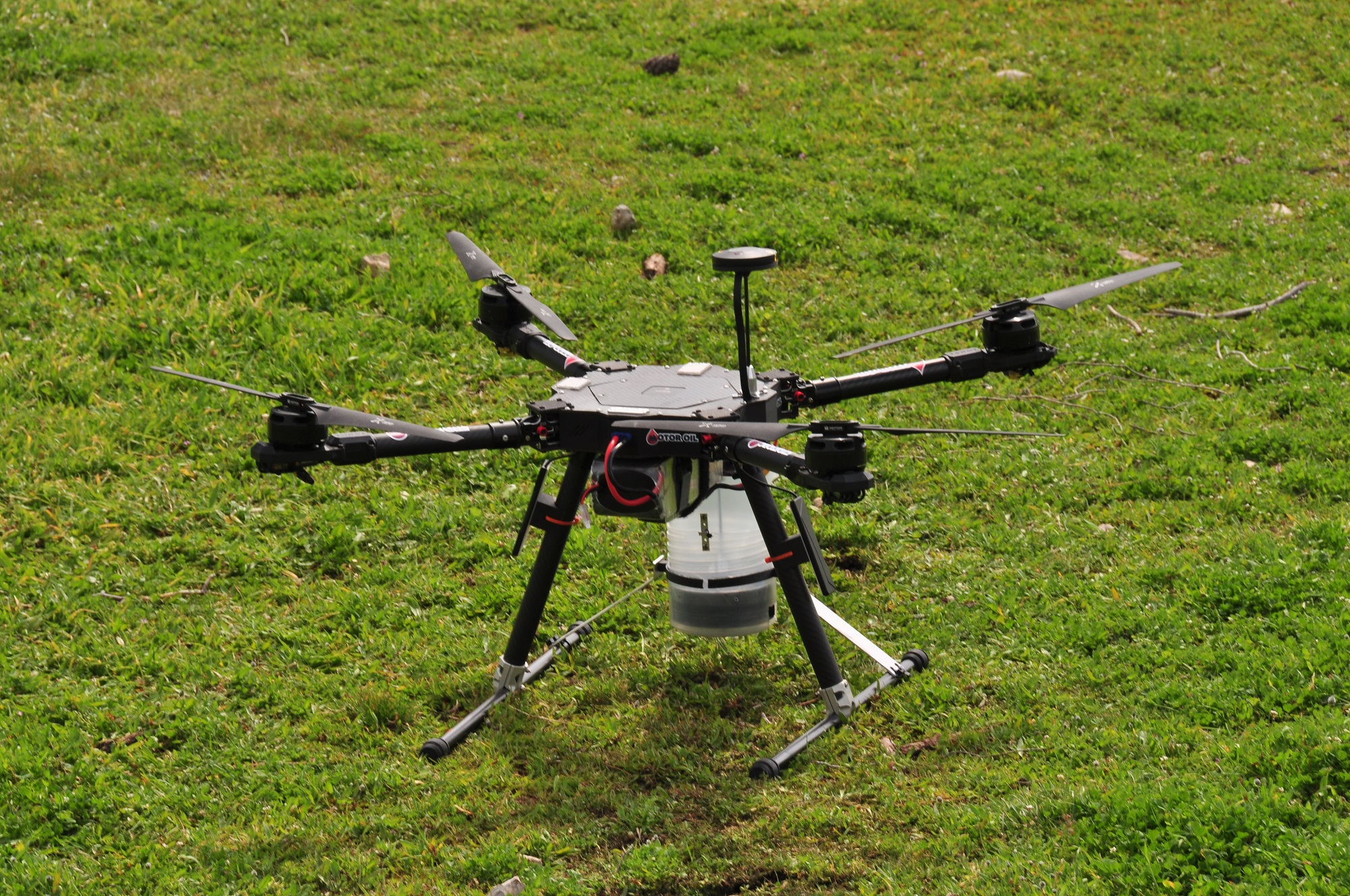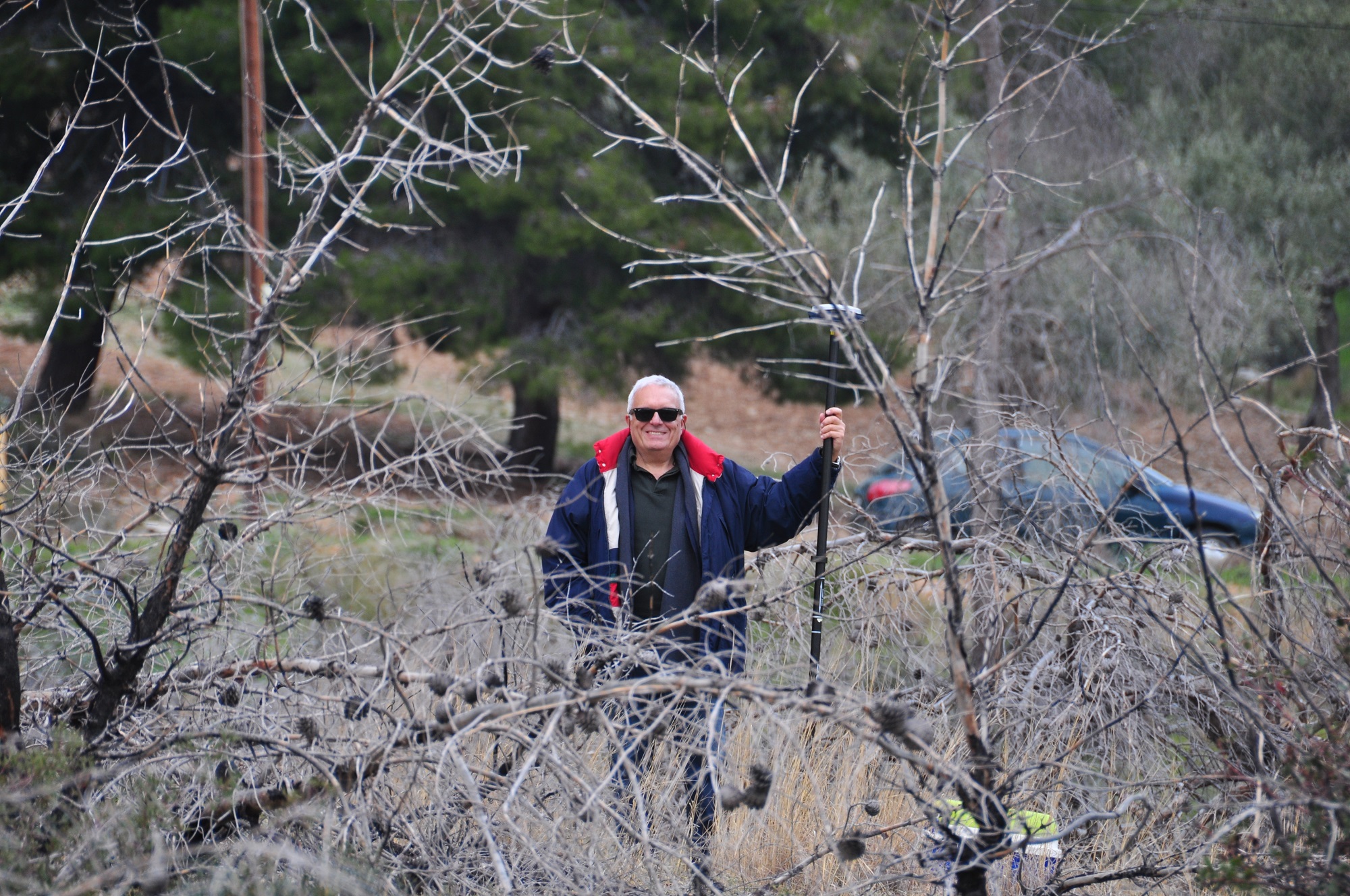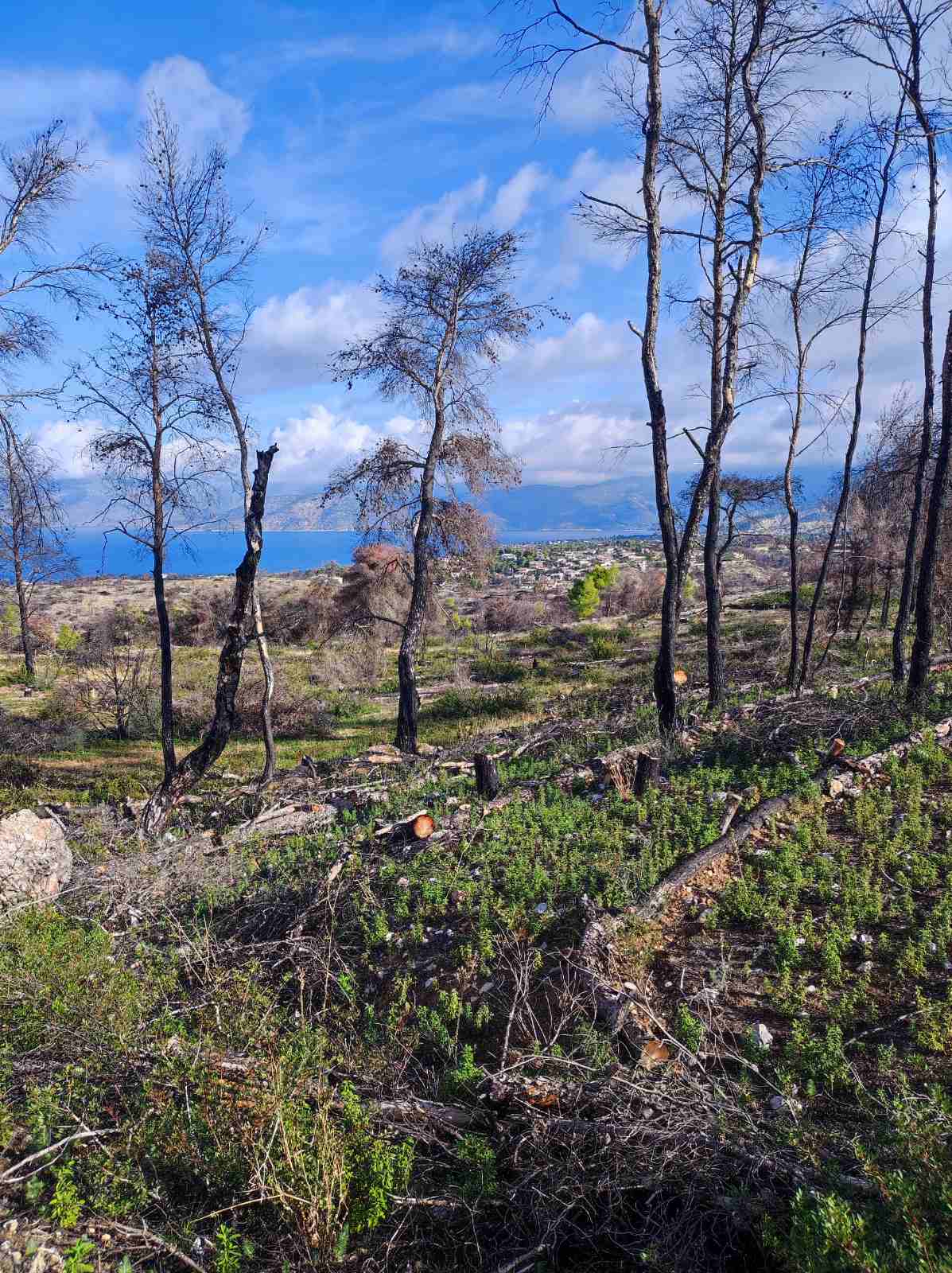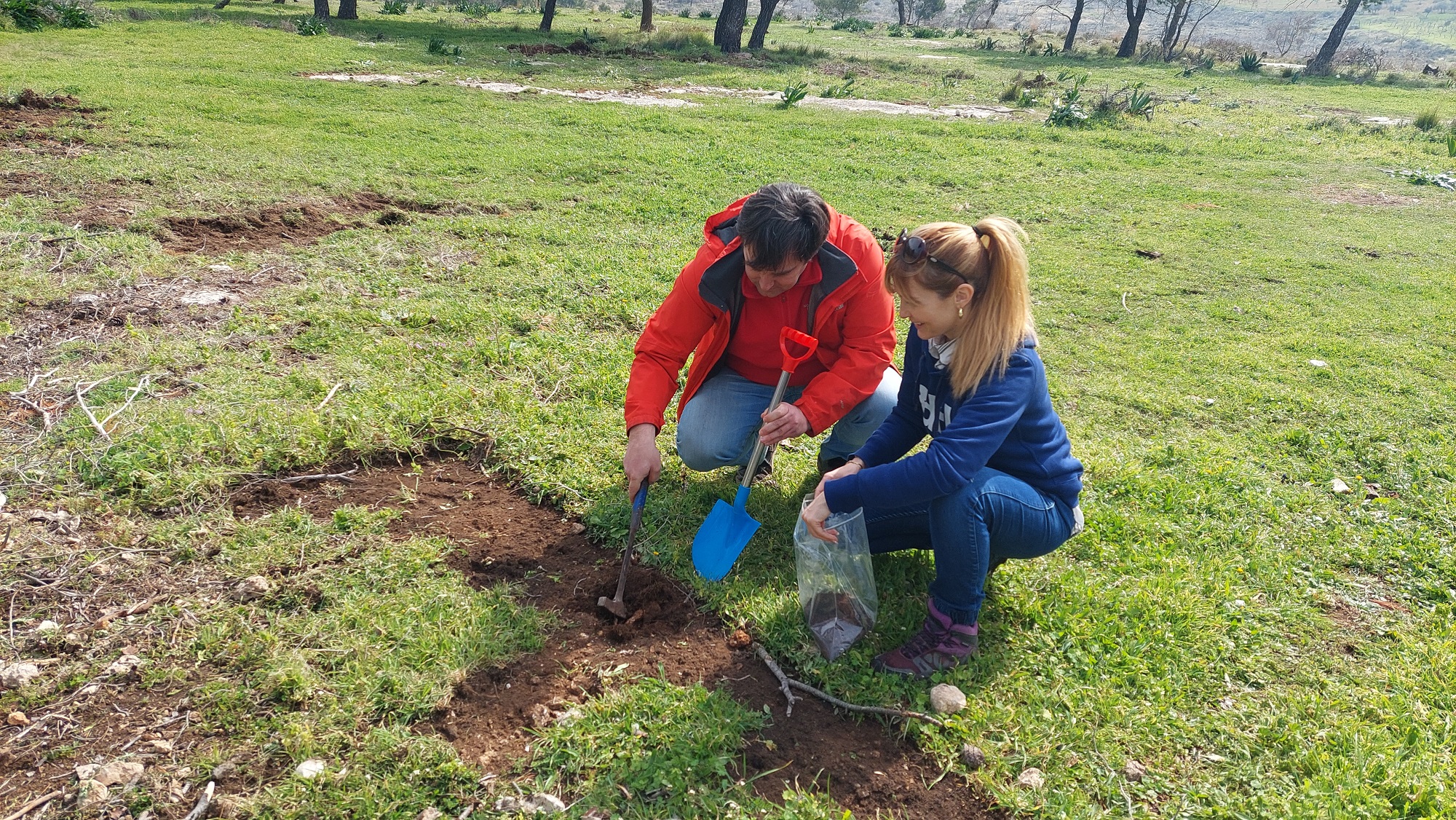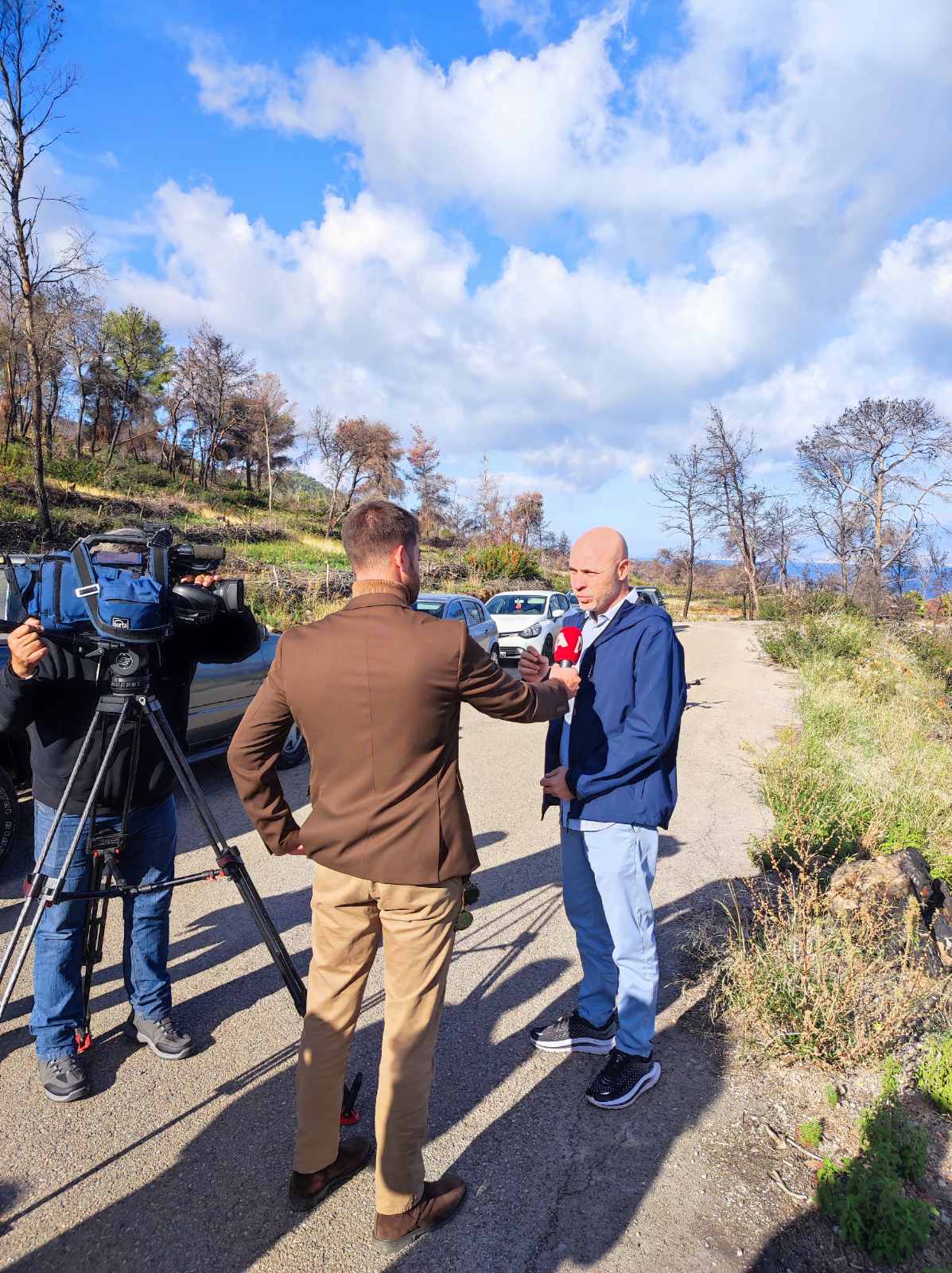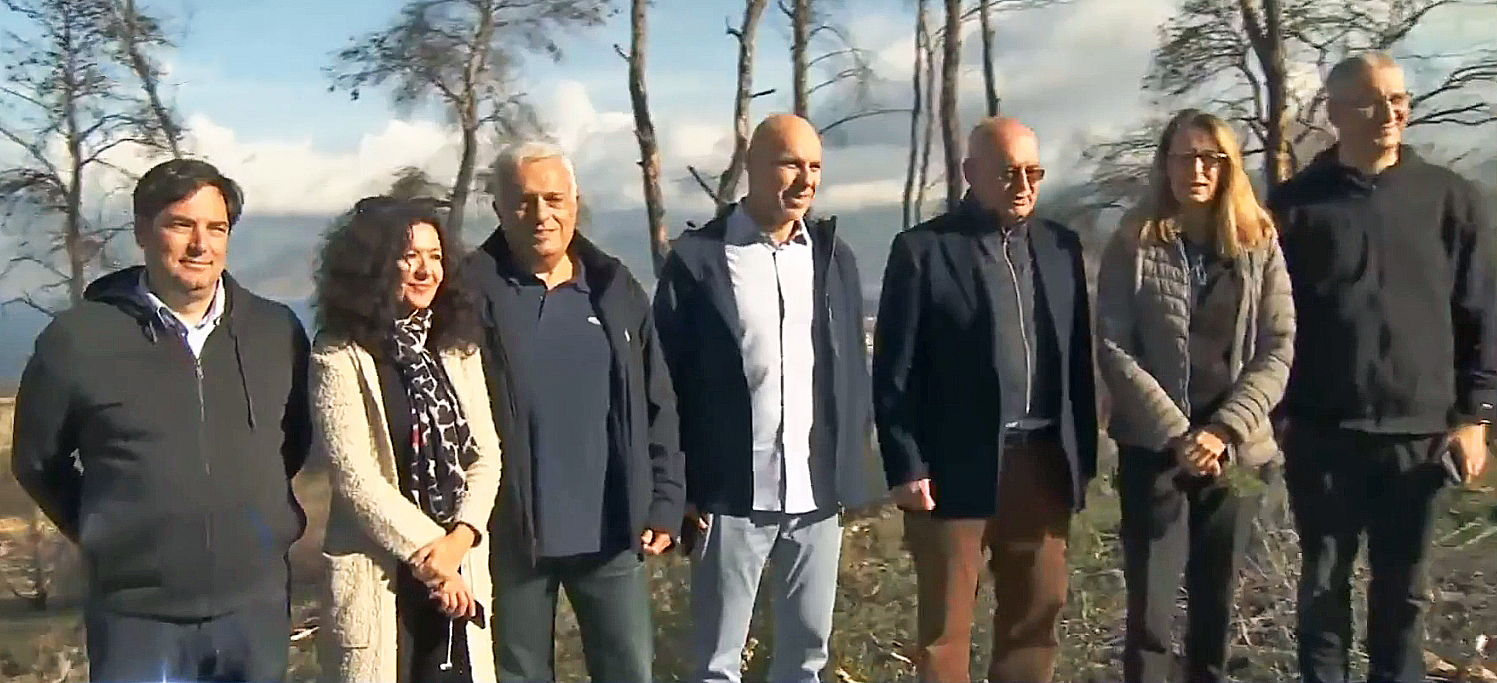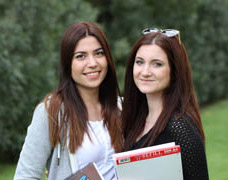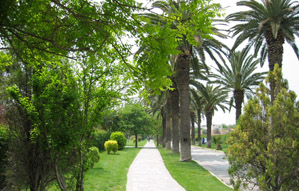The Agricultural University of Athens reforests burnt areas using Unmanned Aerial Vehicles (UAV-drones)

The Agricultural University of Athens reforests burnt areas using Unmanned Aerial Vehicles (UAV-drones).
The Agricultural University of Athens (AUA) once again leads the way in innovative research methods. A research team led by the University applied a pioneering reforestation method of burned forest areas in Alepochori and Kineta, Attica. Specifically, the research team headed by Dr. Christos Karavitis, Professor of the Department of Natural Resources Development and Agricultural Engineering, consisting of Mr. Michael Liaros (MOTOR OIL), Dr. Ioannis Papanikolaou, Professor, Dr.Emmanuel Psomiadis, Assistant Professor of the same Department, Dr. Dimitra Paitaridou, Director of the Center for Processing, Control and Certification of Forest Reproductive Material (K.E.E.P.D.A.P.Y.), Mr. Konstantinos Misialis (Forester), Mrs. Sonia Fragou, Forest Director of Megara, Dr. Spyridon Kintzios, Professor of the Department of Biotechnology (AUA), Dr. Sophie Mavrikou, Assistant Professor of the same Department, Dr. Konstantinos Kalabokidis, Professor of the Department of Geography of the University of the Aegean, Dr. Palaiologos Palaiologou, Assistant Professor of the Department of Forestry & Natural Environment Management (AUA), as well as Mrs. Simoni Alexiou, PhD Candidate and Mrs. Konstantina Benou, M.Sc. Candidate of the Department of Natural Resources Development and Agricultural Engineering, in order to reforest burnt areas quickly and efficiently in extremely inaccessible locations.
The cost was covered by the sponsorship of Motor Oil Hellas, Petroleum Industry Company, and thanks also to the participation of the other organizations, as above, which cooperated successfully, such reforestations efforts were implemented. The complete pilot reforestation technique using drones was carried out under the auspices of the Department of Forestry Works of the Ministry of Environment and Energy, by the timely issuance of the relevant permits, inasmuch by the personal support and presence on the spot during the experimental reforestation on the part of the Deputy Minister of Environment and Energy, Mr. George Amyras.
The pertinent method of reforestation is one of the first worldwide innovative applications of Reforestation techniques, using drones (UAV Unmanned Aerial Vehicles) to seed and following appropriate administrative approvals, piloted in selected areas of 0.5 to 0.10 hectares. The methodology involved digital mapping to produce topographic diagrams, ortho-photo maps and Digital Terrain Models (DTM) of the pilot areas, data on climatic and hydrological-hydrographic conditions, topography, forest soils, geological-geomorphological characteristics, their social and economic issues, the supply and processing of seeds for the reforestation and the anti-erosion plant species, the construction of a special seeding container attached to the drone, in addition to the computer-aided and controlled automated seeding planning and execution.
The use of the above mentioned drones provides access to areas outside the existing road network that are more remote or inaccessible due to e.g. high morphological slopes, while at the same time there is no ground disturbance intervention. In areas where high burning severity has taken place, the soil needs greater protection. The fact that there is no ground interference, i.e. breaching of the soil crust, mechanical soil displacements and soil disturbances from the on ground seeding actions, is a great advantage of using drones in reforestation. The central objective of the scheme is to transfer successful practices of precision agriculture to forest ecosystems, with emphasis on post-fire areas. Such areas have major problems in their restoration, since the vegetation cover may have been completely destroyed.Thus, the central scope examined is how to help regeneration and at the same time to prevent the intense phenomena of water, wind or mechanical erosion, which usually follow. Given the pilot nature of the whole effort, different experimental sites and different geo-environmental conditions will be needed. This is why such sites have been selected having different geological origin, different geomorphological characteristics, different hydrological conditions and different soil characteristics.
Finally, the design and implementation of the seeding have been performed through a drone carrying a suitable container. Carob, Judas-tree (Cercis siliquastrum), and Cypress seeds from native forest species were placed into it, which had been provided by the Center for Processing, Control and Certification of Forest Propagating Material of Amygdaleza, Attica. The seeds used were sprayed with various pesticides, surrounded by liquid cotton film and placed in a clay capsule to which various pesticides, fertilizers and growth aids were added by the Cell Technology Laboratory (AUA). The seeding of forest species was preceded by the seeding of anti-erosion native plants (Lacy phacelia), to prevent potential soil erosion. In this way, from October 2022 until the beginning of March 2023, successive seeding efforts took place in the pertinent areas.
For more information, all the interested parties may visit the following links:
https://www.youtube.com/watch?v=AIoa0QZ466w
https://www.youtube.com/watch?v=Oo5429JeTik&t=5s
